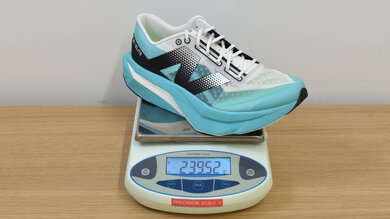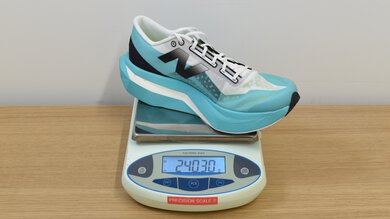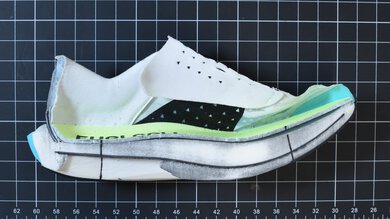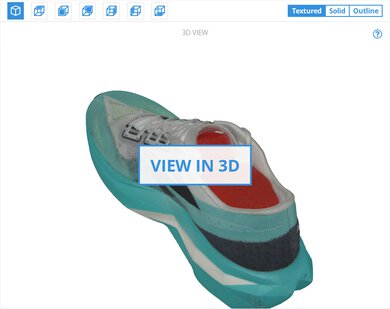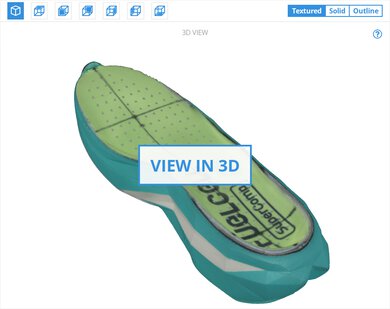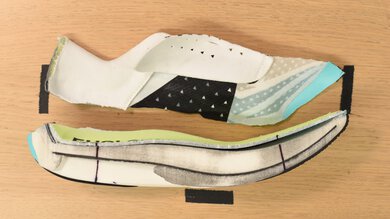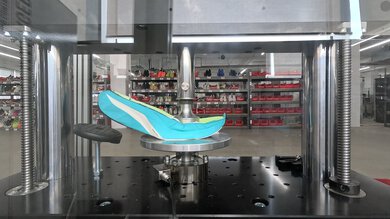The New Balance FuelCell SuperComp Elite v4 is designed for marathon running and focuses on comfort for long-distance use. The shoe features a redesigned midsole using PEBA foam combined with a full-length carbon plate aimed at delivering a cushioned and efficient running experience. The upper and outsole have also been redesigned for this iteration. This is a versatile shoe, whether you're prepping for race day or need a stable option for the marathon.
Our Verdict
The New Balance FuelCell SuperComp Elite v4 is a great marathon racer. It boasts impressive cushioning, keeping legs fresh and comfortable deep into races, complemented by strong energy return that helps maximize every stride. Overall, with a lateral stability that's good compared to most other super shoes, it's confidently suited to serious marathon performances for most runners, but its weight limits the shoe from being truly "elite."
Well cushioned for a super shoe.
Carbon-plated.
Quite stable for a super shoe.
Its weight holds it back.
For 5K and 10K distances, the New Balance FuelCell SuperComp Elite v4 provides good performance. It's supported by great energy return from the midsole foam. However, its weight and relatively soft forefoot slightly limit its agility and responsiveness, meaning it's solid for most runners but not an elite option specifically tailored to short, high-speed events.
Well cushioned for a super shoe.
Carbon-plated.
Forefoot could be firmer.
Its weight holds it back.
The New Balance FuelCell SuperComp Elite v4 showcases great energy return overall, efficiently converting each foot strike into lively forward propulsion. Both forefoot and heel offer impressive bounciness, making every step feel purposeful and energized.
Bouncy and reactive.
Balanced energy return suits most foot strikes.
Some alternatives feel more energetic.
The New Balance FuelCell SuperComp Elite v4 provides excellent cushioning, offering superior comfort and reliable protection mile after mile. Its heel cushioning is impressive, and the forefoot cushioning is even better, making the shoe ideally suited for prolonged efforts, whether racing or intensive training sessions.
Well cushioned for a super shoe.
The lateral stability of the New Balance FuelCell SuperComp Elite v4 is only average compared to all running shoes, but is actually quite good for a super shoe. Its very wide base and carbon plate provide solid initial stability, although the softer heel and higher stack height slightly reduce overall stability.
Carbon-plated.
Super wide platform.
Quite stable for a super shoe.
Foam could be firmer.
High stack height.
Performance Usages
Changelog
-
Updated Oct 30, 2025:
We've updated the Popular Comparisons section, following the review of the New Balance FuelCell SuperComp Elite v5.
- Updated Oct 28, 2025: We've converted this review to Test Bench 0.9, which adds a Forefoot Long Run Cushioning test to our performance section. Read more in our changelog.
-
Updated Oct 20, 2025:
We updated the 5K/10K Racing, Heel Cushioning, Forefoot Cushioning, and Forefoot Firmness boxes to align with the latest test bench and revised the side-by-side comparisons to keep the review accurate.
- Updated Oct 20, 2025: We've converted this review to Test Bench 0.8.2, which updates our methodology for the impact force range used in our compression tests to improve their accuracy. This also affects all usage and performance usage boxes using those compression tests as score components.
Differences Between Sizes And Variants
We tested the New Balance FuelCell SuperComp Elite v4 in men's U.S. size 9, as noted on the label. The color shown here is Cyber Jade with White and Black. Other color options for this shoe are limited, but depending on the region, you can also find it in colorways like White/Bleached Lime Glo/Hot Mango or White/Angora/Hot Mango. Wide versions are available for both men (2E) and women (D).
Popular Running Shoe Comparisons
The New Balance FuelCell SuperComp Elite v4 is a reliable super shoe. It offers a strong blend of cushioning, energy return, and stability, making it an appealing choice for most runners seeking to achieve a personal best in their next race. While it's versatile enough for a wide range of athletes, elite or sub-elite runners seeking the absolute pinnacle of race-day performance may prefer lighter and more energetic options, such as the Nike Alphafly 3 or the adidas Adizero Adios Pro 3. If you are looking for a similarly approachable super shoe with decent stability but still want premium features and performance, check out the Diadora Gara Carbon 2.
The Elite v4 has now been technically replaced by the New Balance FuelCell SuperComp Elite v5, although they're two rather different shoes, with the v5 being much lighter, more streamlined, and somewhat less accommodating to wider feet. Within the rest of the New Balance lineup, the New Balance FuelCell Rebel v5 primarily serves as a daily trainer, balancing weight and cushioning to offer a reliable everyday ride experience. There's also the New Balance FuelCell SuperComp Trainer v3, which, despite the similar name, is actually a carbon-plated super trainer.
For more options, check out our recommendations for the best running shoes, as well as the best running shoes for men and the best running shoes for women.
The Nike Alphafly 3 and New Balance FuelCell SuperComp Elite v4 are both racing shoes, though each prioritizes different aspects of performance. The Nike is lighter and built specifically for elite-level marathon racing, offering maximum energy return, making it ideal for runners aiming for peak performance. The New Balance, while heavier, provides a more accomodating fit and more cushioning, making it a versatile and comfortable choice suitable for a broader range of runners targeting personal bests.
The Nike Vaporfly 3 and New Balance FuelCell SuperComp Elite v4 are both super shoes but cater to different priorities. The Nike is notably lighter, offering superior energy return and a more aggressive feel underfoot, making it a better choice for runners aiming for maximum efficiency for shorter races. On the other hand, the New Balance provides a more cushioned experience and enhanced stability. While the Nike excels in pure speed, the New Balance's versatility makes it a comfortable, reliable option suitable for a wider range of runners and racing scenarios.
The adidas Adizero Adios Pro 4 and New Balance FuelCell SuperComp Elite v4 are both high-performance super shoes, but they cater to slightly different needs. The adidas shoe is the better pure racing option: it's lighter, more energetic, and more efficient overall, making it ideal for runners chasing peak performance. The New Balance shoe, while still race-ready, offers more stability and a wider, more accommodating fit, making it a strong choice for runners who want solid race-day performance without compromising on comfort or support.
The New Balance FuelCell SuperComp Elite v5 is the successor to the New Balance FuelCell SuperComp Elite v4, yet in many ways, it marks a significant departure. While still a relatively accommodating race shoe, the v5 has a considerably narrower platform, making it a less stable option. But by whittling down the platform, New Balance managed to trim off nearly 40g of weight, resulting in a much nimbler and livelier shoe than the v4.
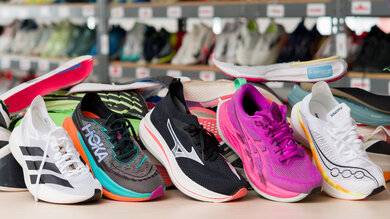
We've recently started buying and testing running shoes with a very data-oriented approach. While we're just getting started, our methodology already has dozens of tests to help you make the right purchasing decision for your needs. Not only do we use high-end equipment to gather objective data, but we also order multiple sizes of the same shoes for team members to be able to log in miles. This real-world testing is done at various paces and conditions, and with different types of workouts, to cover all the bases. This allows us to verify our results and ensure they align with what you might feel with a specific pair.
Test Results

The New Balance FuelCell SuperComp Elite v4 feels reasonably lightweight but isn't among the lightest super shoes. It won't hold you back too much during races, but for shorter, high-speed efforts, its extra weight will be noticeable compared to the very top-tier, featherweight competitors like the adidas Adizero Adios Pro Evo 1.
The heel energy return in this model is impressive, delivering a responsive, bouncy sensation with every heel strike. This supports a smooth and energetic ride, which is especially beneficial for runners who land further back on their feet.
The shoe provides great forefoot energy return, efficiently turning each toe-off into lively propulsion. Though marginally behind the heel's performance, the forefoot still returns a ton of energy, helping you move forward efficiently, particularly during prolonged efforts.
The shoe offers very good heel cushioning that comfortably absorbs impact. It provides good protection across a whole range of forces, making it suitable for a variety of runners, but it won't feel as cushioned for those who apply a lot of force (such as fast and/or heavy runners).
The forefoot cushioning is better than the heel, consistently offering plush protection even under significant loads. The cushioning feels particularly comfortable, effectively absorbing impact at all intensities, ensuring sustained comfort for runners striking at the midfoot or forefoot.
The New Balance FuelCell SuperComp Elite v4's heel firmness is low overall, indicating relatively soft foam in this area. While this softness contributes positively to comfort, it slightly compromises stability, especially as impact forces increase, potentially requiring runners to pay closer attention to form to maintain a stable foot strike.
The shoe's forefoot is quite firm overall, offering a balanced feel. But it isn't quite as firm at higher intensities as some competitors like the Nike Vaporfly 3. This slightly softer feel provides comfort without sacrificing too much stability. However, runners who prefer maximum dynamism may find it less firm than other high-performance racing shoes, especially for shorter events.

